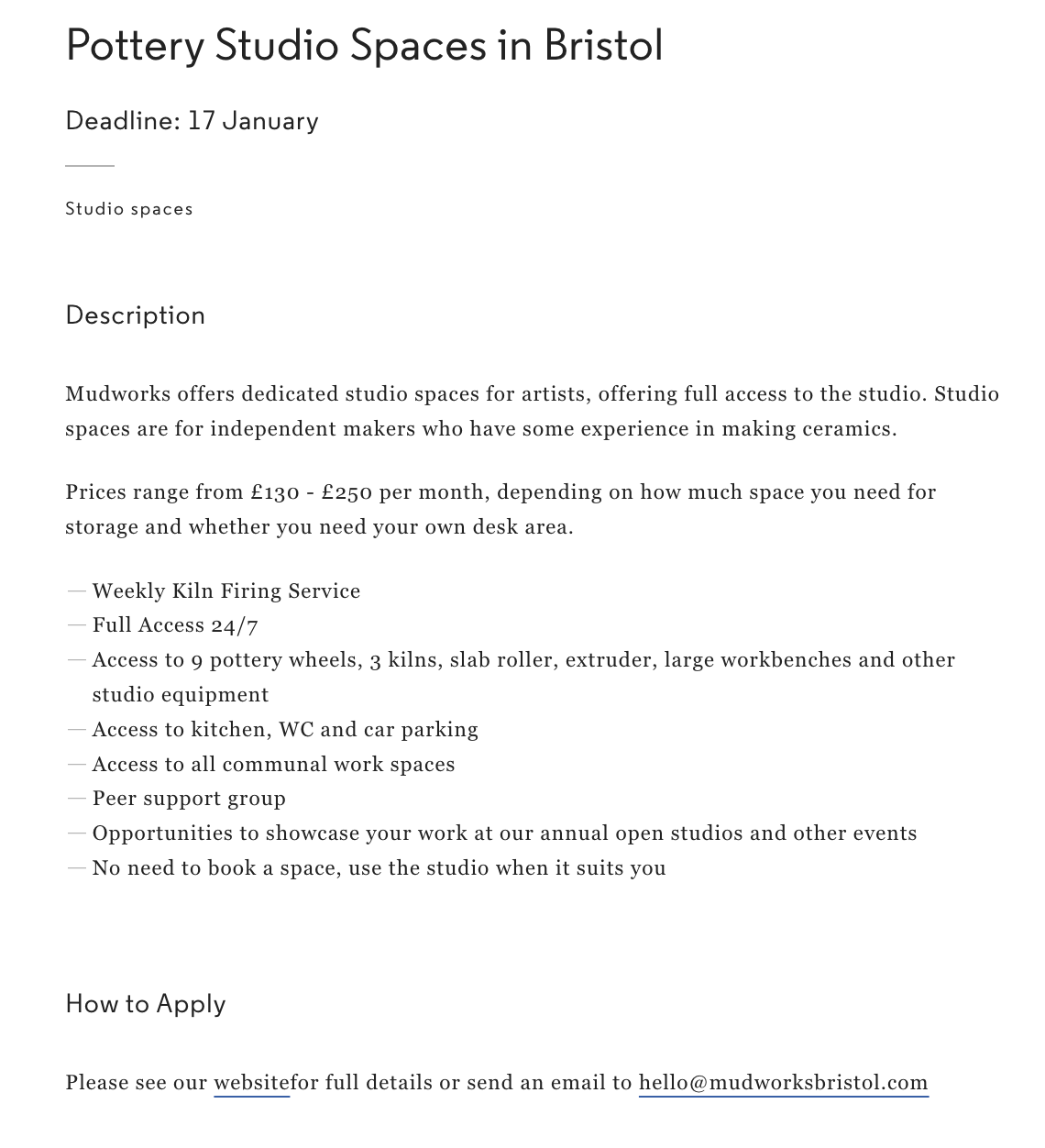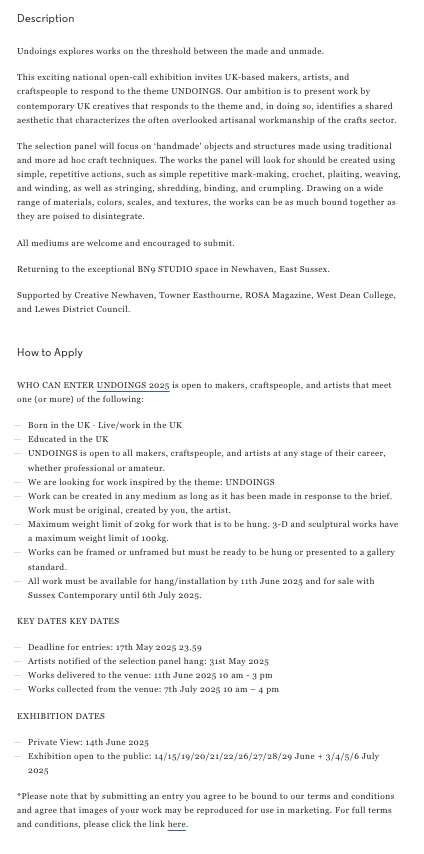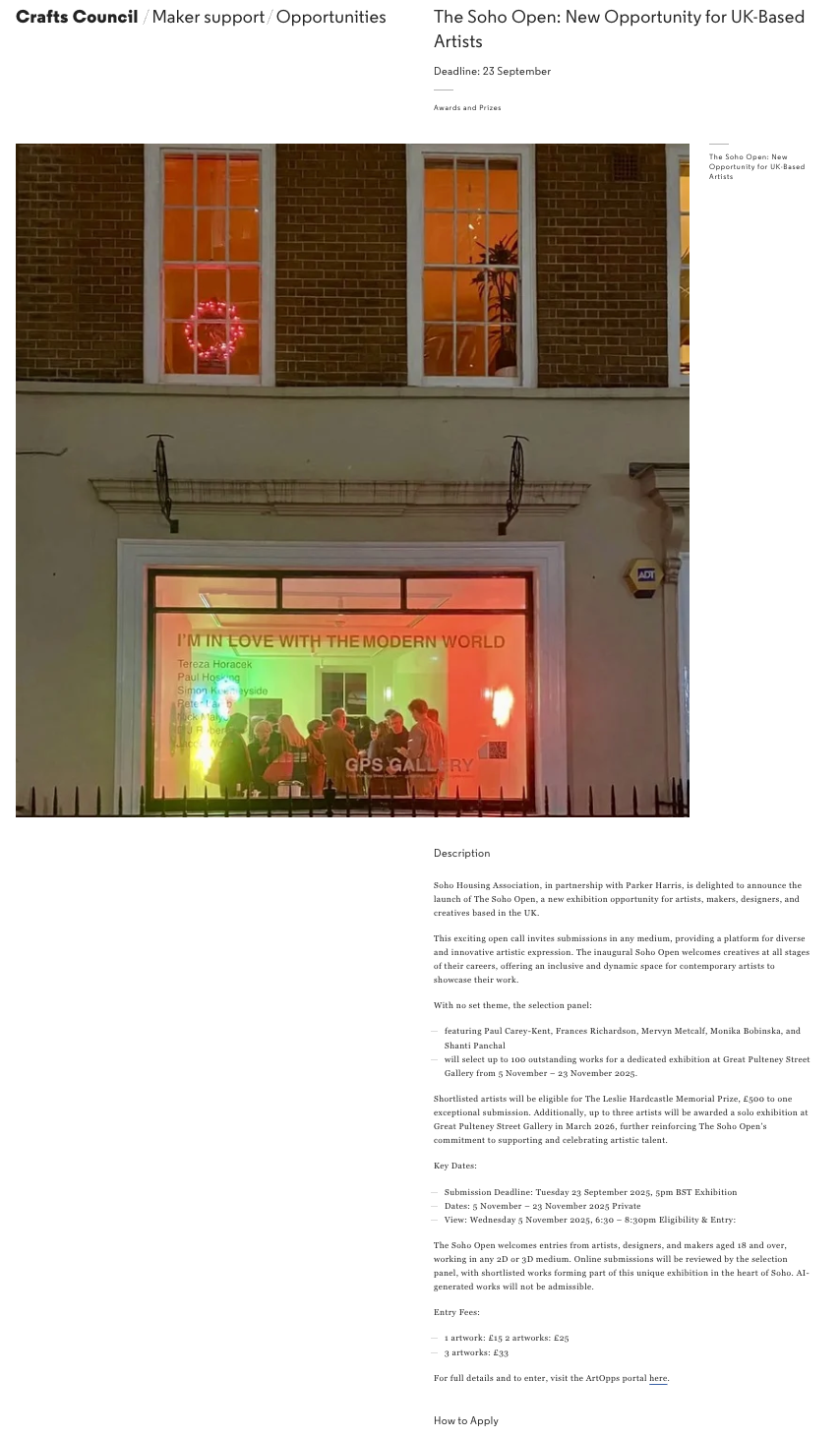Vertical Gallery
As part of Future Me Week, I went to the vertical gallery briefing, where we talked about what the vertical gallery is, gallery space and the application process. I wanted to apply for this to push me out of my comfort zone and give my work a new platform to be seen. As my work is created with the concept of free art, I wanted to challenge myself to think about how this concept would work in a gallery space- would I give work away? Would I show pictures of my free art? thinking about different avenues for how my work can be created for different purposes.
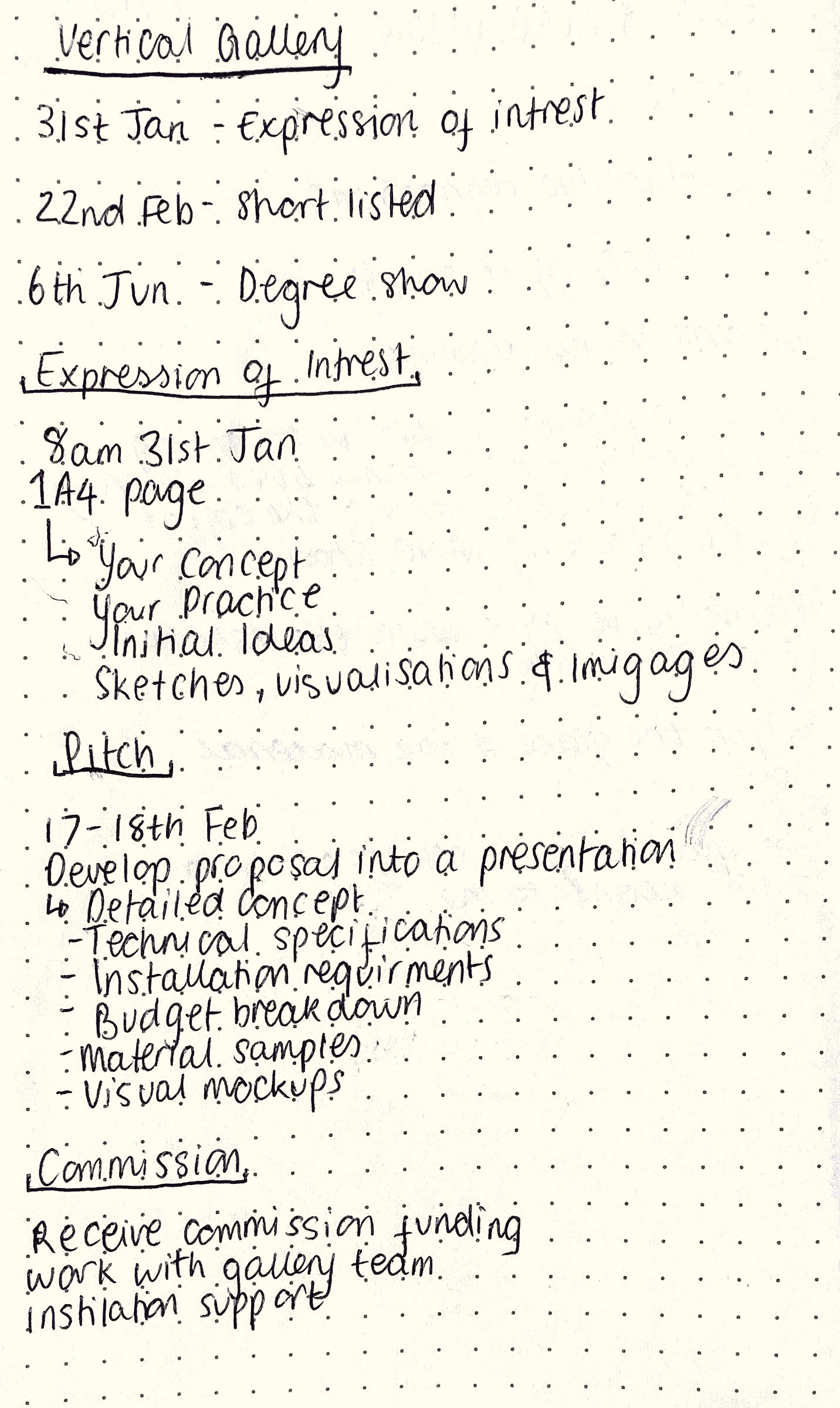

For my submission of interest, I wanted to show what my work was about, as I hadn't fully thought of an idea of what would best represent my work. I knew that I wanted to create something slightly different to my practice, but still using the same concepts. I knew this commission would be a really good opportunity for me to push my practice boundaries, to use it as a place to meet other creators and allow me to be involved in the process of creating a gallery, giving me more experience.
As a follow-up to unit x, I wanted to create bigger ceramic pieces, especially as I'm sizing down my ceramics for this project, having larger scale pieces would not only draw people in, but the gallery space given would give my work the attention in the display. I knew that I could also work with brighter colours, making the space more vibrant for the audience.
Unfortunately, my idea wasn't long-listed, but I learned a lot from the process. One key takeaway is that having a clear initial direction for my work would have helped me write about it with more confidence and clarity. Despite not being selected, I enjoyed exploring different ways to develop my work. Some of these ideas can still be pursued as future projects, and I can incorporate aspects of them into synthesis and resolution.
In reflection, I don't regret my application. Realistically, I don't think I would have managed well to complete two projects in the given timeframe. I'm currently using my time very precisely to achieve everything I want from my current project. If I had to also factor in time for the vertical gallery, I wouldn't have been able to produce a final piece to my standard for synthesis and resolution. This experience has taught me that for future projects and applications, I need to carefully consider whether I can complete all the required work to my standard. Otherwise, there's no point in completing two projects that I'm not fully happy with and that don't show my full potential as a creator.
Volunteering Opportunities
Volunteering on community-based art projects is crucial for fostering community engagement, enhancing social connections, and promoting cultural exchange. As an artist, participating in these projects allows me to connect with diverse groups, share my creative vision, and contribute to the cultural fabric of my community. It also provides opportunities for personal growth and skill development, enabling me to learn from others and gain new perspectives. By volunteering, I can make art more accessible and impactful, supporting local economies and enriching the lives of those around me. This aligns perfectly with my passion for working with local communities and facilitating art in my city, helping me build a meaningful and inclusive practice.
Get It Done
Get It Done is a community arts organisation based in Manchester and South London, founded in 2017 with the mission to make creative change happen by supporting people to address social issues in their local communities through creativity and collective action. They provide free and low-cost opportunities for thousands of people to engage in creativity and culture across the UK, producing creative projects with communities to drive positive impact and supporting creative change makers to achieve their innovative visions. Get It Done focuses on long-term impact and engagement, shifting from pop-up events to embedded community projects over the years, believing in the transformative power of community and collaboration to address pressing social issues through creativity.
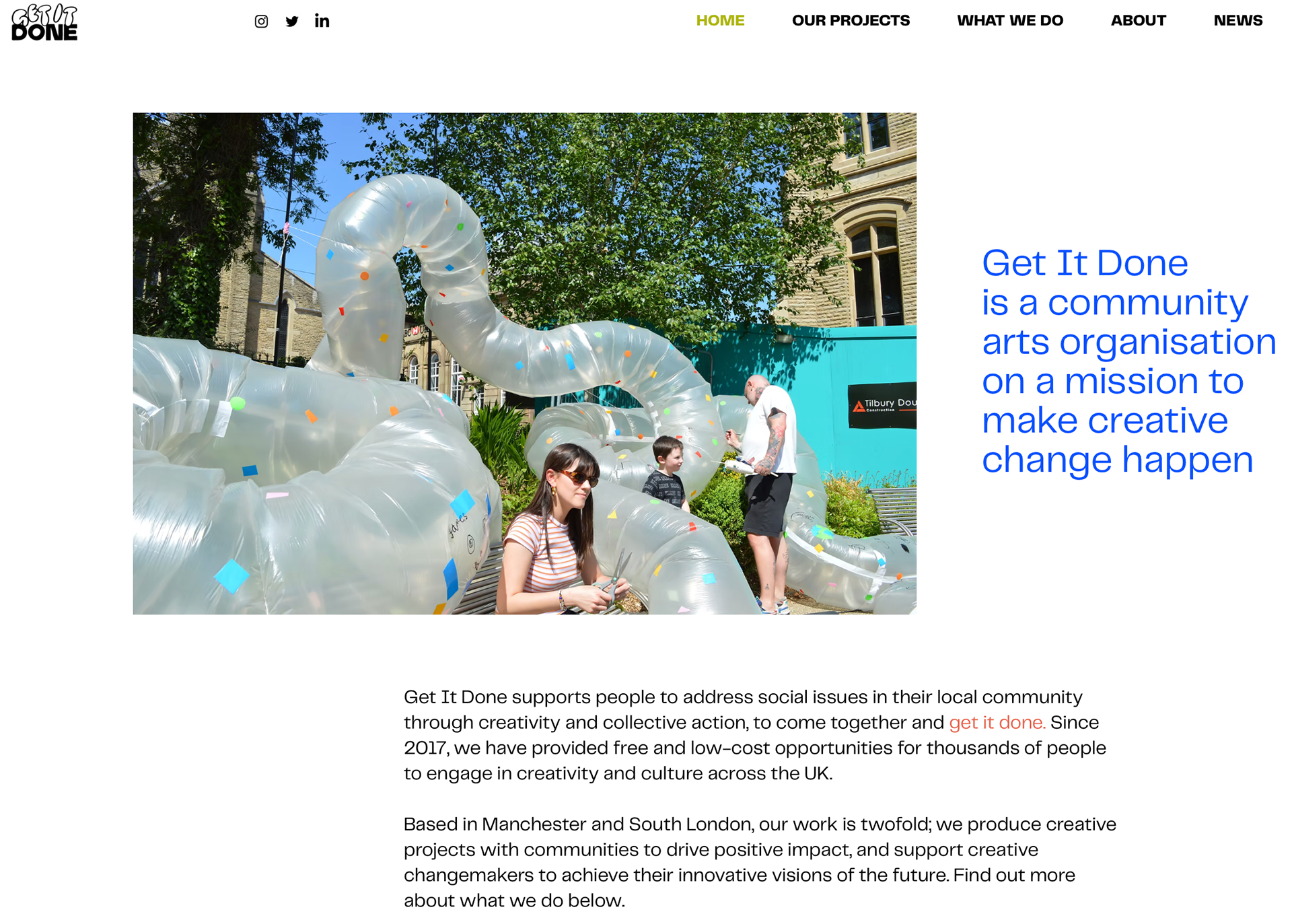

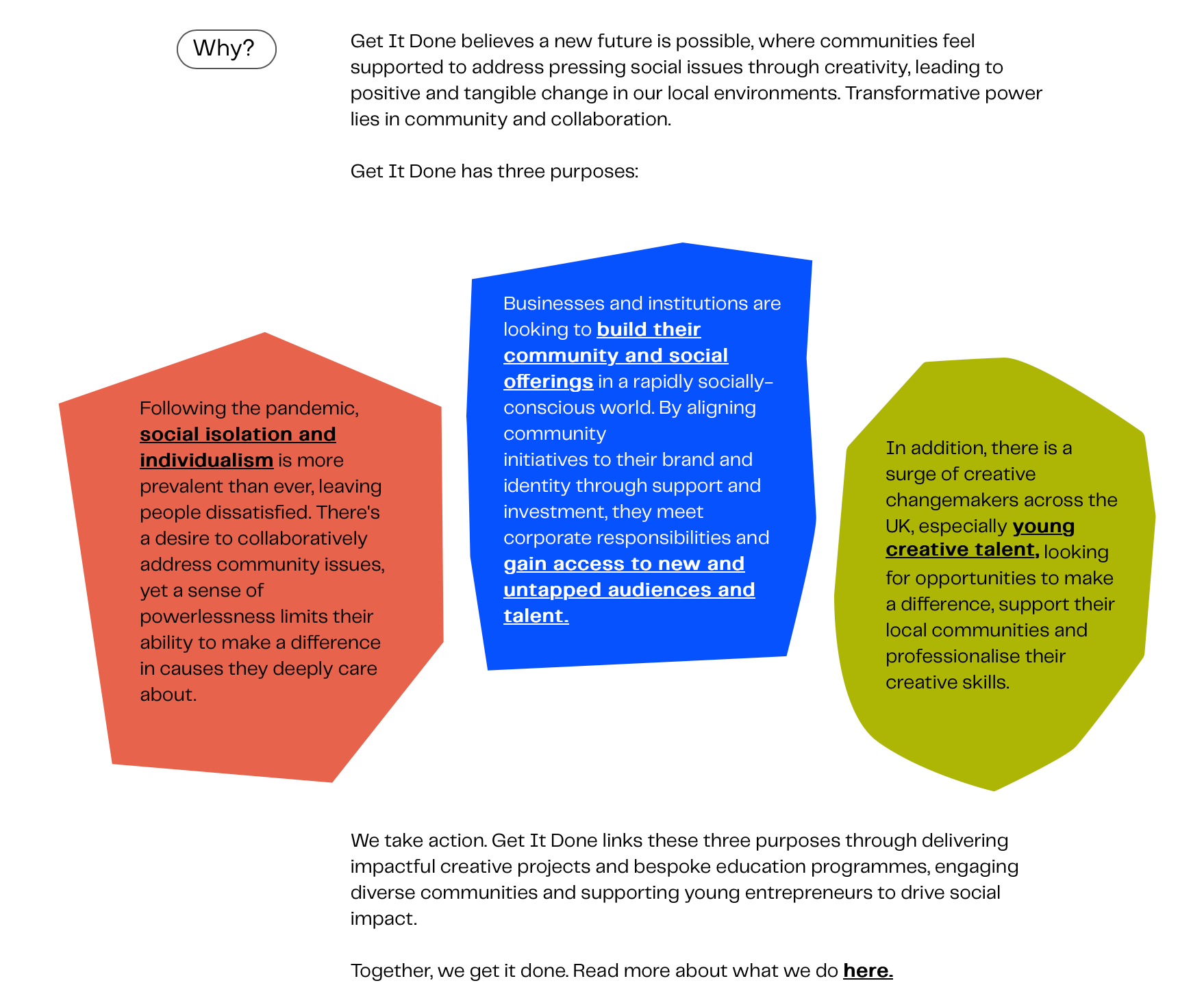
I got in contact with Get It Done, and although I initially emailed them without receiving a reply, I persisted by directly messaging them on Instagram and LinkedIn and emailing again. After pursuing a response, they finally got back to me about my interests and potential future projects I could be involved in. While I haven't set up anything concrete yet, this initial contact looks promising.
Volunteering with Get It Done will expose me to the concepts of community art and free, accessible art, which are key to me as a maker. By offering to volunteer, I have the opportunity to contribute my skills and creativity to meaningful community projects, develop my creative abilities, and be part of a supportive network of like-minded individuals dedicated to making a positive difference. It will also teach me a lot about my own practice and help guide the direction I want my work to take.

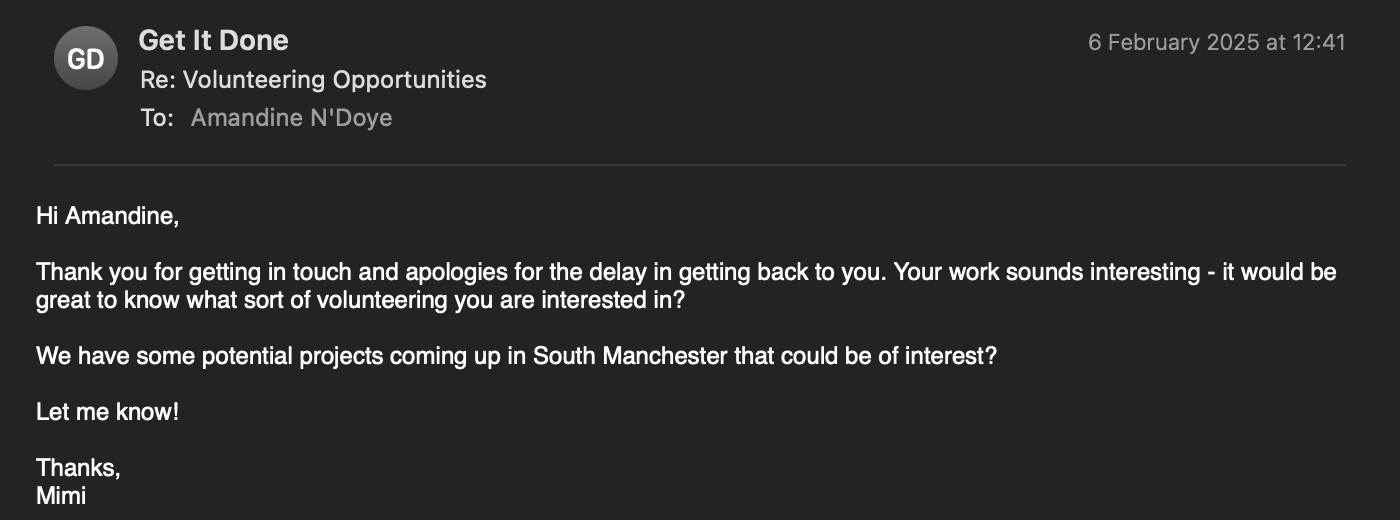

I was particularly keen to get in touch with Get It Done because they are based in both Manchester and London. Volunteering in community-based projects in Manchester while I'm a student allows me to build connections and continue volunteering after I finish university, as London is only a short commute from home. I was initially worried about doing community volunteering solely in Manchester, but finding a company with a presence in other cities means I can continue working with them after university.
Creating an Exhibition
Lil and I have previously discussed our desire to create an exhibition for our work. We want to seize this opportunity while we're still students, so we've decided to organise and host a public exhibition. Although this will require a lot of organisation, Lil and I both work in ceramics and share a strong friendship and similar ideas, which will help us make this possible.
We plan to have weekly meetings to track the progress of our exhibition. Our main goal this week is to find a location. Once we secure a venue, we can determine how many people to include and establish a timeline. Working backwards from our exhibition date will be crucial for us to create a space that showcases our work to its fullest potential.

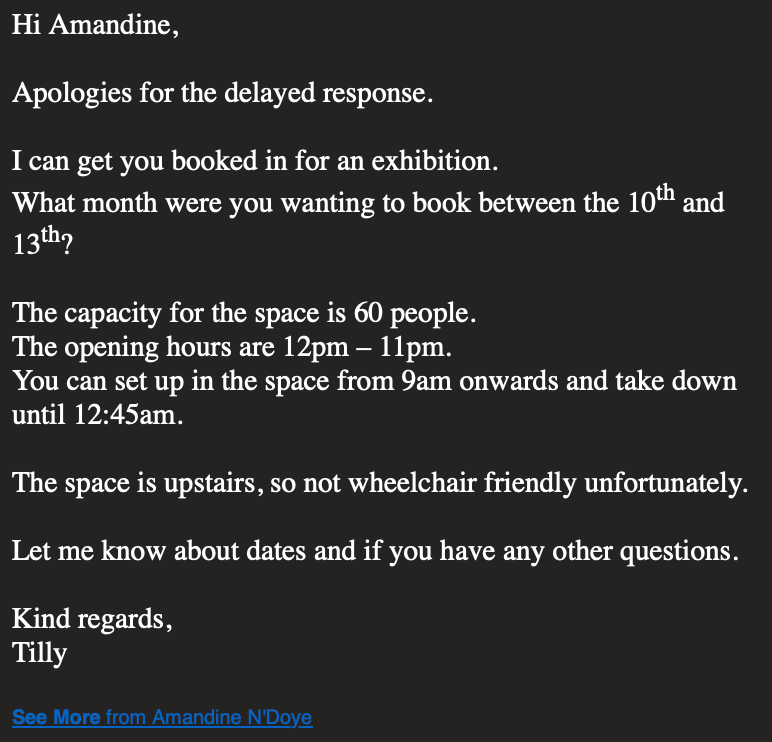



Lil and I spent an afternoon looking around Manchester for suitable venue spaces. We considered several places, focusing on details such as capacity, timings, security, and workspace arrangements (wall hangings, power, tables). Our goal was to find a venue that would showcase our work while providing ample space for socialising and networking.
We found an event space in the Northern Quarter called Terrace, a cafe/bar that seemed like the best fit. The space is free, only requiring a damage deposit. It has plenty of natural lighting and a separate function room that allows for easier monitoring. The function room has a capacity of 60 people and appears to be the perfect spot for our work. The central location is also important, providing easy access for visitors and making it convenient for exhibitors to take away their work afterwards.
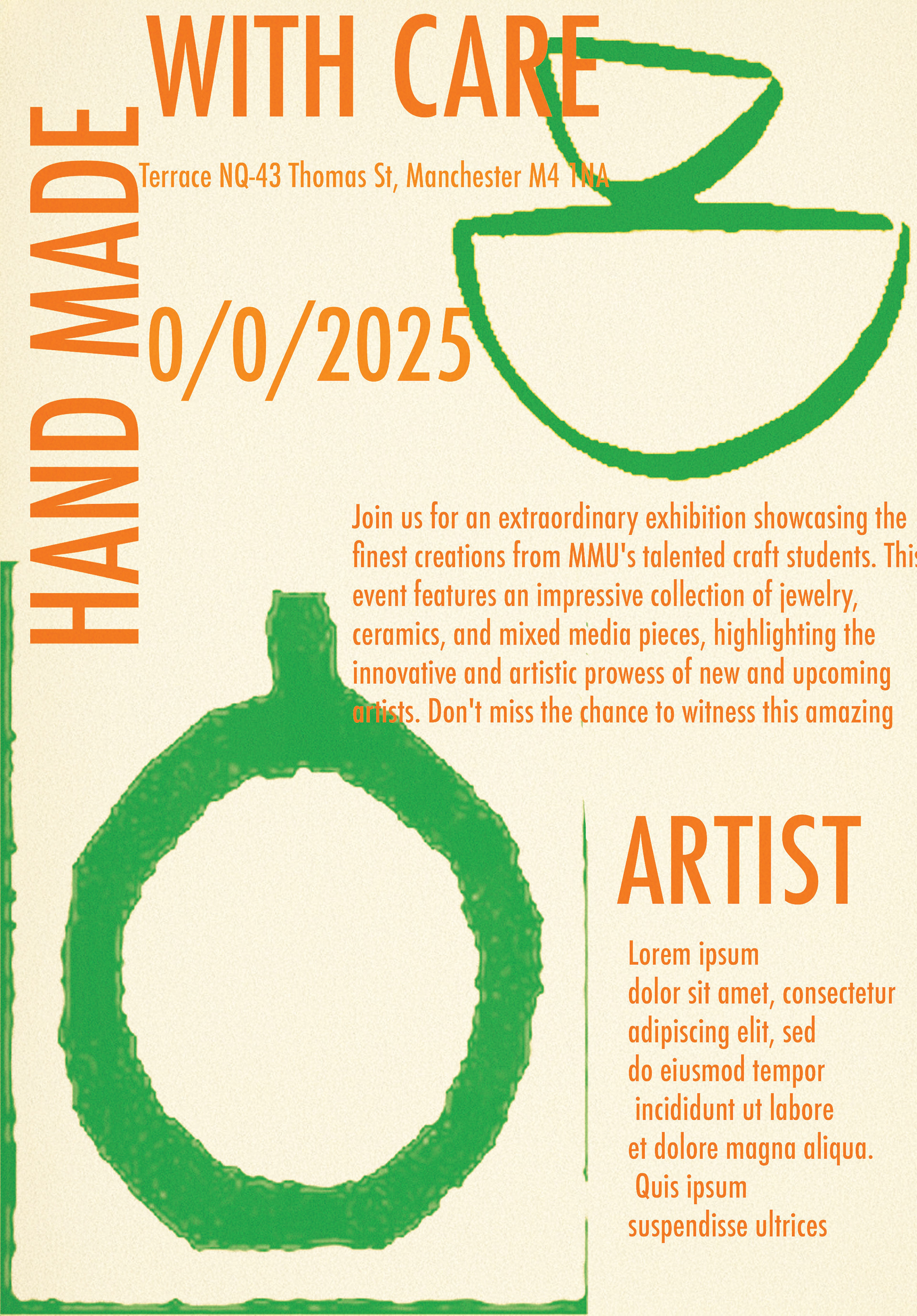
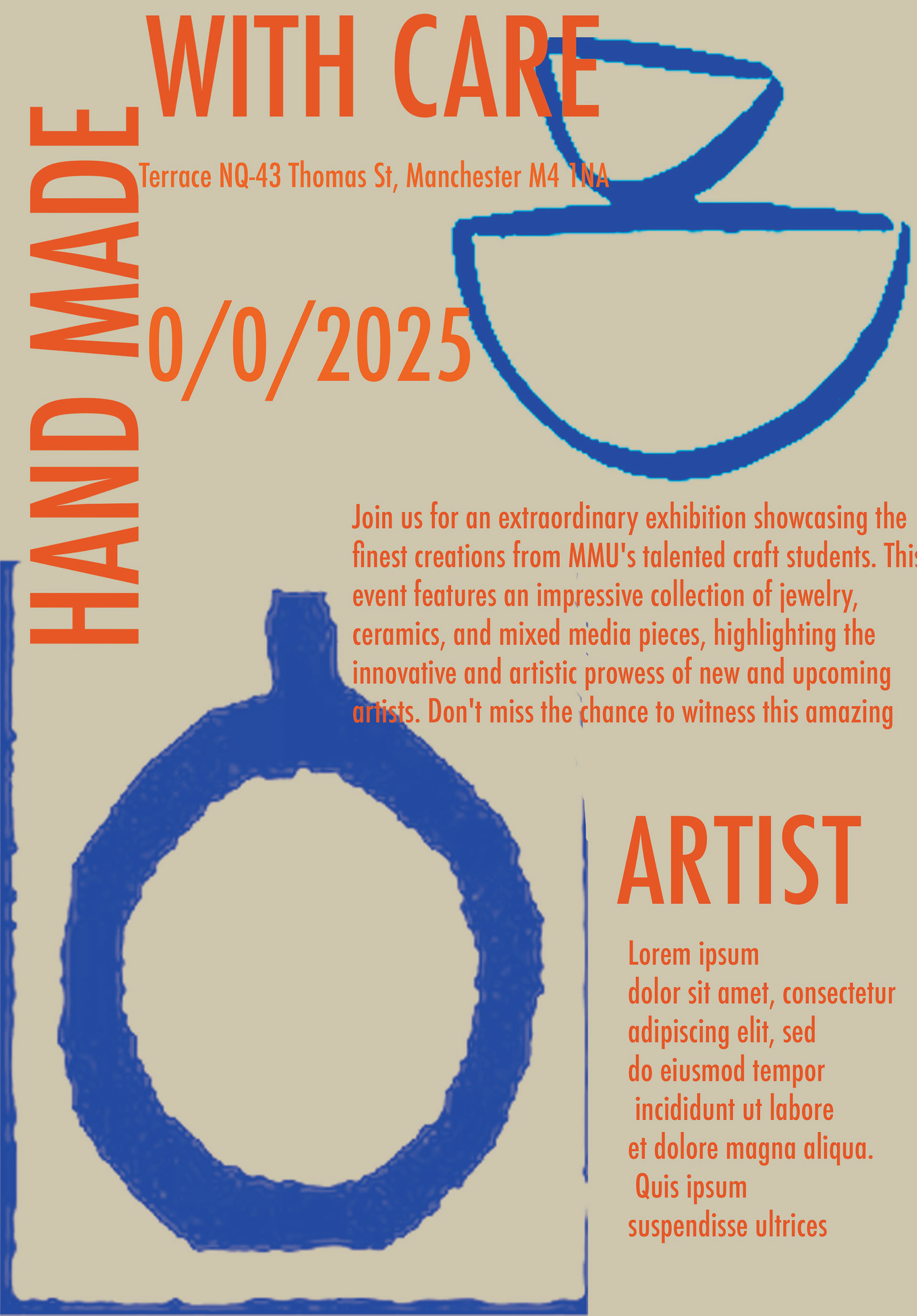

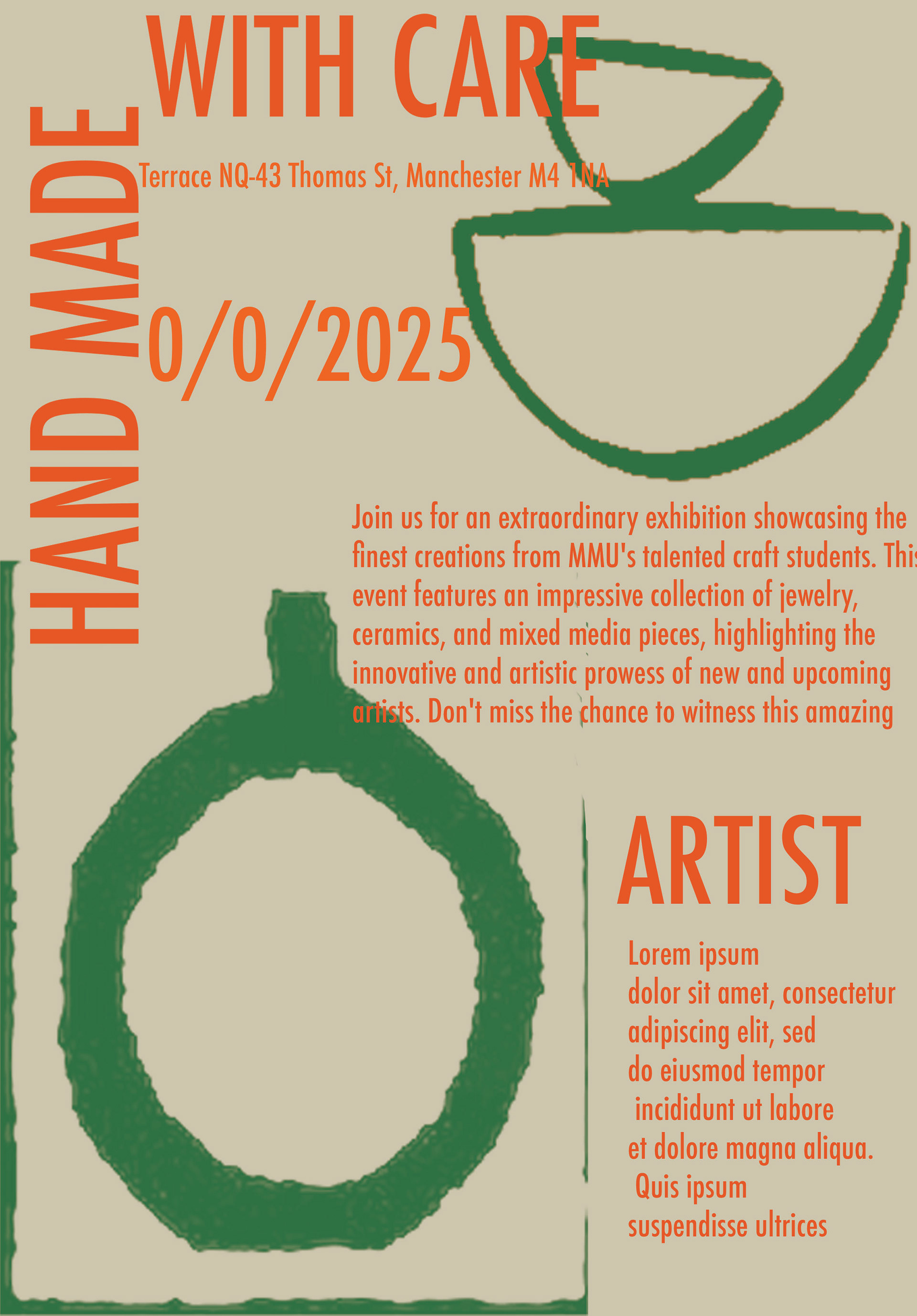
Lil and I are exploring mock-ups for posters to experiment with how we might advertise our exhibition. Our main focus will be on posters and social media. While these initial designs are quick sketches, I want to play more with a colour scheme that reflects both of us. We have many details to discuss, including our exhibition name, participants, and overall look, but with deadlines, this isn't our main priority right now.
Due to the tight schedule around Easter, many students were unable to prepare for the exhibition as they prioritised their project submissions. To alleviate this stress, Lil and I decided to move the exhibition date to after our hand-in, giving everyone ample time to organise and present their final pieces. Although we couldn't set up the exhibition initially, I'm excited to plan it post-submission. We aim to include all disciplines, not just ceramics, to create a diverse and inspiring exhibition.
New Designers
The New Designers Exhibition in London is an annual event that showcases the UK's most innovative emerging design talent, it features a wide range of disciplines, including craft, fashion, textiles, and lots of other practices. The exhibition provides over 3000 graduate designers a platform to gain exposure, network with industry professionals, and receive valuable feedback and opportunities. It's a prestigious event that offers workshops and talks by leading experts, making it an excellent opportunity for designers to kickstart their careers and make important connections in the design world.


Exhibiting at New Designers is a fantastic opportunity for my practice because it provides exposure to industry professionals, buyers, and the press. This event allows me to showcase my work directly to collectors and consumers, potentially leading to sales and valuable connections. Additionally, New Designers offers curated exhibition spaces, stand presentation advice, and the chance to win awards, all of which can significantly enhance my professional profile.
Mini Uni Exhibition

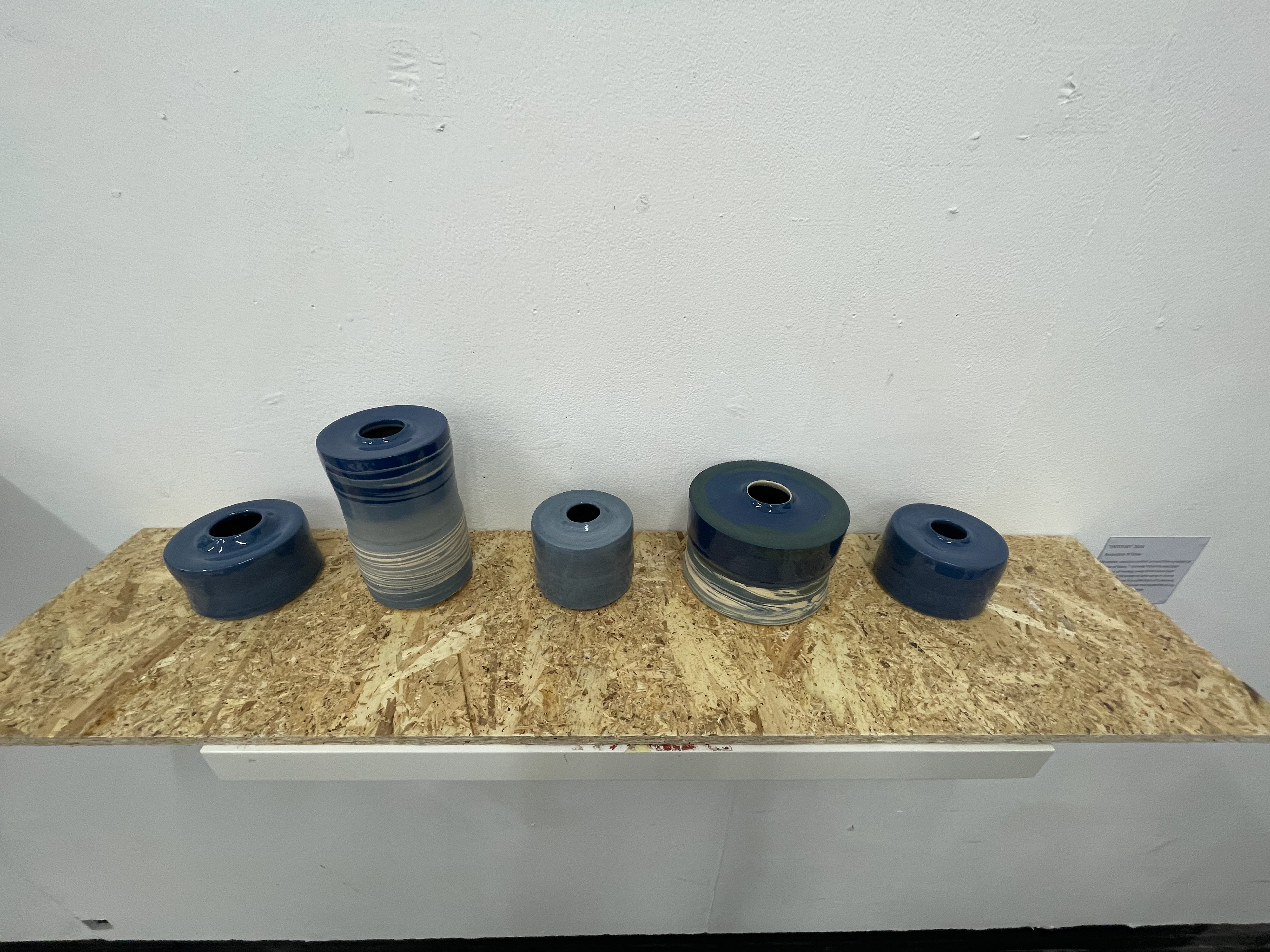
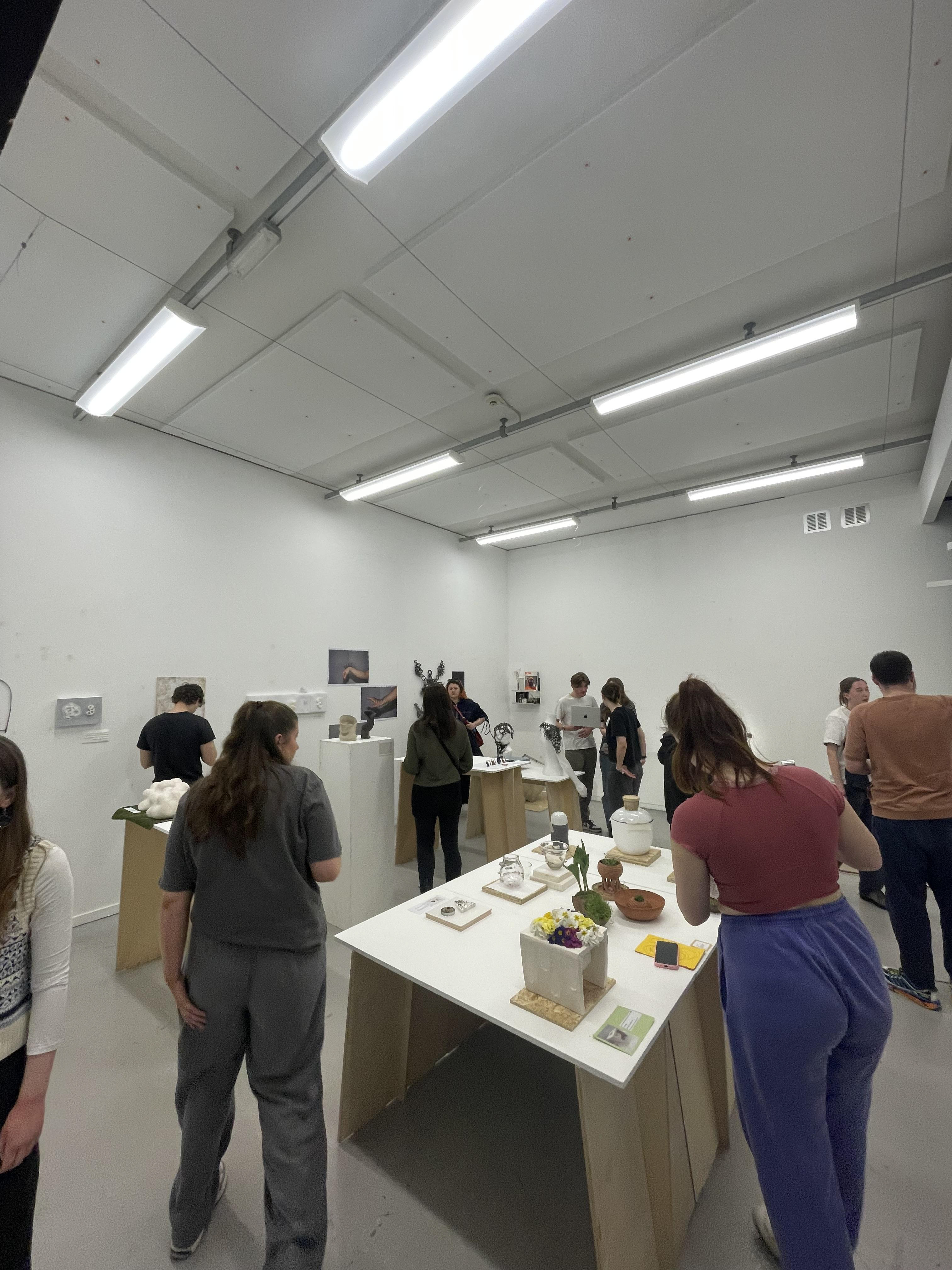
This temporary exhibition was a valuable exercise in refining the display of my work. By focusing on precise details, I was able to make significant improvements. For instance, displaying my ceramic vessels on a long, continuous wooden shelf at chest height allows viewers to closely appreciate the collection. Adjusting the shelf height by just two inches made a noticeable difference, enabling people to better see the tops and openings of my vessels.
Considering the placement of my bright, delicate ceramic pieces among other works is crucial. I noted that placing them next to fine jewellery might cause them to get lost. Instead, displaying them alongside other ceramics or glass pieces could create a more harmonious and impactful presentation. Additionally, using wall space effectively is important. I need to choose a wall that is strong and long enough to support my collection, ensuring it is well-highlighted within the exhibition.
This thoughtful approach to display will enhance the visibility and appreciation of my work, making it stand out while complementing the overall exhibition.
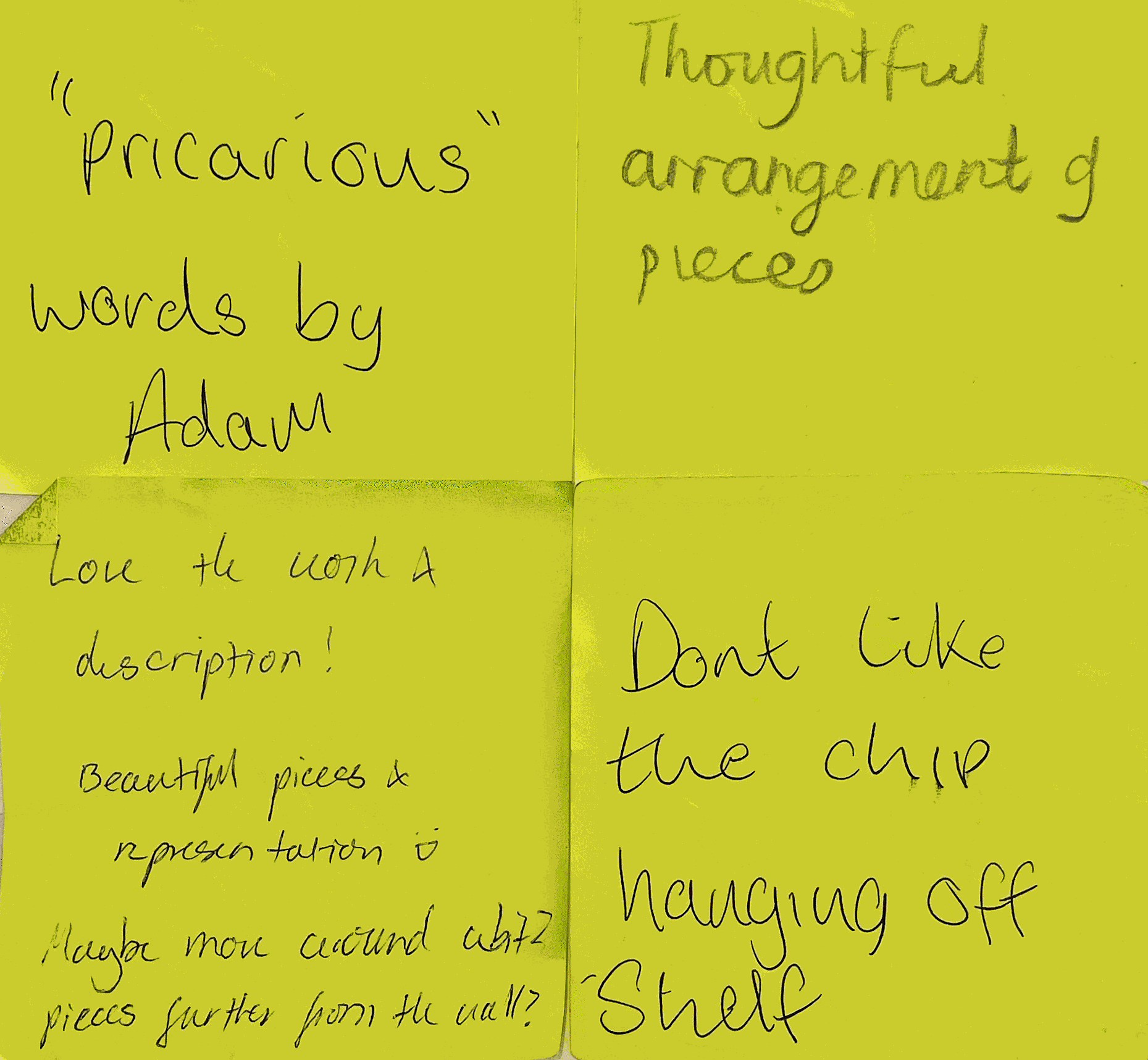
These are the comments and reflections I received from peers regarding my display. However, I didn’t find the feedback particularly helpful, as it focused too much on the temporary setup rather than the core concept I was exploring. The display was never intended to represent the final presentation of my work, I was simply working with materials I had available at the time and making use of pre-existing shelving. My final work will not be displayed on chipboard or in an unsecured manner, so critiques based on those aspects missed the point.
What I was really aiming to test was the height of the display, as this is a crucial element in how my vessels are viewed, particularly in terms of seeing both the profile and the top of each piece. Unfortunately, this intention wasn’t fully understood in the peer feedback, which focused more on surface-level presentation details.
Following this, I had more in-depth conversations with others on my course, which proved far more valuable. These discussions helped me refine my thinking around the ideal viewing height. Through this process, I determined that 130 cm from the ground is the most effective height for allowing viewers to engage with the form and surface of the vessels from the intended perspective.
This experience highlighted the importance of clearly communicating the purpose of a test setup, especially when it’s not representative of the final outcome. It also reinforced how valuable targeted, concept-focused feedback can be in developing a display strategy.
Fresh- British Ceramics Biennial
The Fresh British Ceramics Biennial is a prominent event in Stoke-on-Trent, celebrating emerging talent in contemporary ceramics. This exhibition provides a platform for early-career artists to showcase their innovative work, inspiring and challenging audiences with their creativity. The biennial features a diverse range of artists, from self-taught individuals to those with formal training, and includes unique residency opportunities for standout participants.
Applying to the Fresh British Ceramics Biennial could significantly benefit my practice by providing a prestigious platform to showcase my work to a broader audience, including collectors, curators, and fellow artists. This exposure can lead to valuable networking opportunities, collaborations, and potential sales. Additionally, the biennial offers unique residency programs that can help me develop my skills, explore new techniques, and gain inspiration from other talented ceramicists. Participating in such a renowned event can also enhance my professional profile and credibility within the contemporary ceramics community
I am waiting closer to my hand-in to apply, as I will have my final photos ready to showcase. High-quality, well-lit photos not only demonstrate my pieces better but also enhance their appearance and appeal. I don't want to rush into applying, taking the time to prepare these photos will significantly improve the presentation and impact of my work.
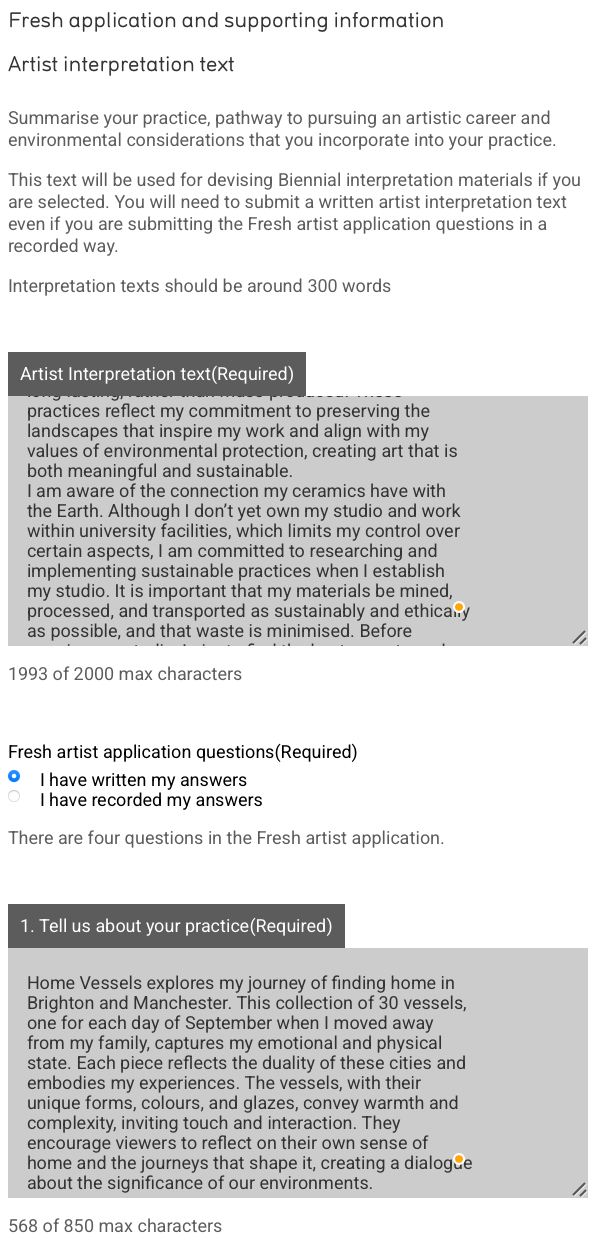
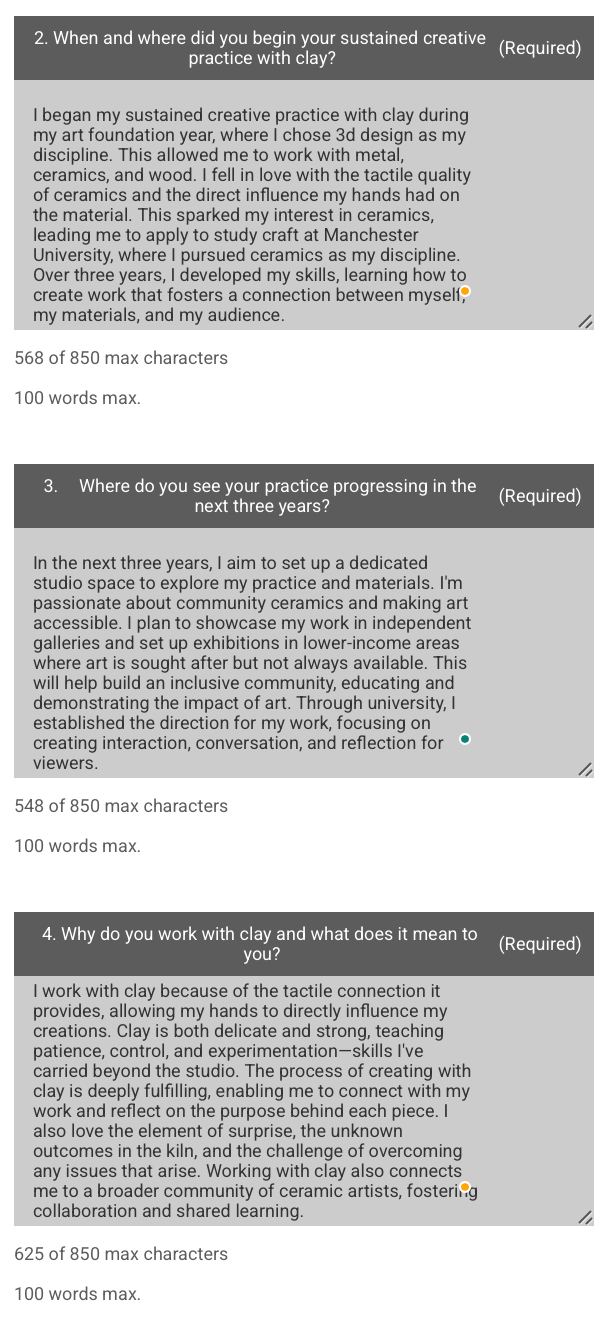
Summarise your practice, pathway to pursuing an artistic career and environmental considerations that you incorporate into your practice. max 300 words
My artistic practice revolves around creating ceramics that embody my personal experiences and the landscapes that shape me. I focus on questions that have shaped my life, my practice, and my view on art, reflecting these emotions through my work. My ceramics invite viewers to interact and contemplate their own experiences, fostering a sense of connection and reflection.
My journey to pursuing an artistic career began as a child, watching my mother create sculptures. This early exposure sparked my interest in art, which developed further in college with a deep fascination for ceramics and the tactile nature of clay. This passion grew as I explored the processes of throwing, shaping, and glazing during my university studies. Formal education and mentorship refined my skills and solidified my commitment to a career in the arts.
Environmental sustainability is integral to my practice. I exclusively use recycled clay and carefully measure the amount needed to avoid excess. I use non-toxic glazes and minimise waste by being mindful of not wasting oxides and other materials. My work is crafted with care and attention to detail, ensuring it is well-made and long-lasting, rather than mass-produced. These practices reflect my commitment to preserving the landscapes that inspire my work and align with my values of environmental protection, creating art that is both meaningful and sustainable.
I am aware of the connection my ceramics have with the Earth. Although I don’t yet own my studio and work within university facilities, which limits my control over certain aspects, I am committed to researching and implementing sustainable practices when I establish my studio. It is important that my materials be mined, processed, and transported as sustainably and ethically as possible, and that waste is minimised. Before opening my studio, I aim to find the best ways to make my practice as sustainable as possible, ensuring that every step of my process respects the environment.
Tell us about your practice, 100 words.
Home Vessels explores my journey of finding home in Brighton and Manchester. This collection of 30 vessels, one for each day of September when I moved away from my family, captures my emotional and physical state. Each piece reflects the duality of these cities and embodies my experiences. The vessels, with their unique forms, colours, and glazes, convey warmth and complexity, inviting touch and interaction. They encourage viewers to reflect on their own sense of home and the journeys that shape it, creating a dialogue about the significance of our environments.
When and where did you begin your sustained creative practice with clay?
I began my sustained creative practice with clay during my art foundation year, where I chose 3d design as my discipline. This allowed me to work with metal, ceramics, and wood. I fell in love with the tactile quality of ceramics and the direct influence my hands had on the material. This sparked my interest in ceramics, leading me to apply to study craft at Manchester University, where I pursued ceramics as my discipline. Over three years, I developed my skills, learning how to create work that fosters a connection between myself, my materials, and my audience.
Where do you see your practice progressing in the next three years?
In the next three years, I aim to set up a dedicated studio space to explore my practice and materials. I'm passionate about community ceramics and making art accessible. I plan to showcase my work in independent galleries and set up exhibitions in lower-income areas where art is sought after but not always available. This will help build an inclusive community, educating and demonstrating the impact of art. Through university, I established the direction for my work, focusing on creating interaction, conversation, and reflection for viewers.
Why do you work with clay, and what does it mean to you?
I work with clay because of the tactile connection it provides, allowing my hands to directly influence my creations. Clay is both delicate and strong, teaching patience, control, and experimentation, skills I've carried beyond the studio. The process of creating with clay is deeply fulfilling, enabling me to connect with my work and reflect on the purpose behind each piece. I also love the element of surprise, the unknown outcomes in the kiln, and the challenge of overcoming any issues that arise. Working with clay also connects me to a broader community of ceramic artists, fostering collaboration and shared learning.
5 Supporting Images I Used

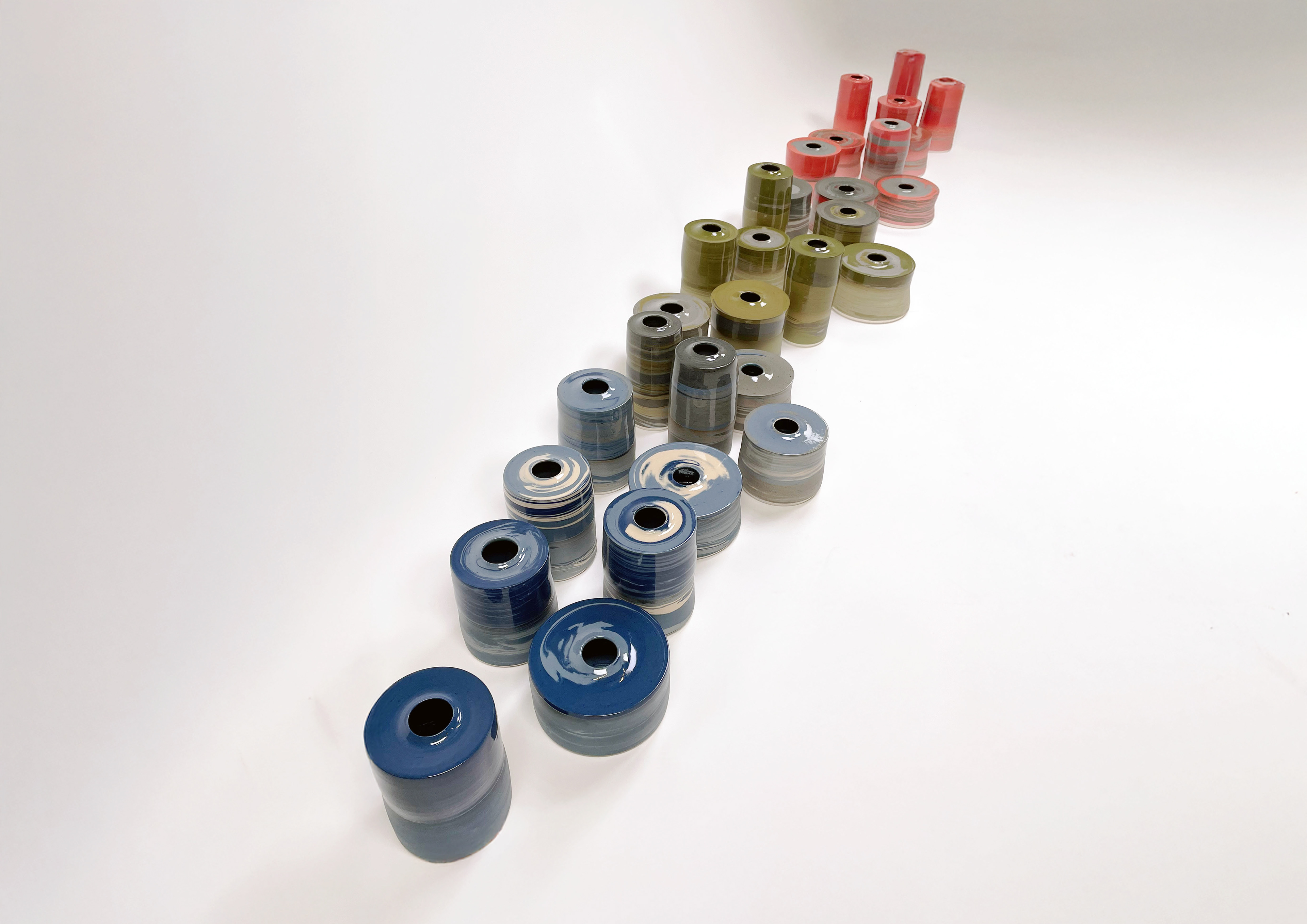


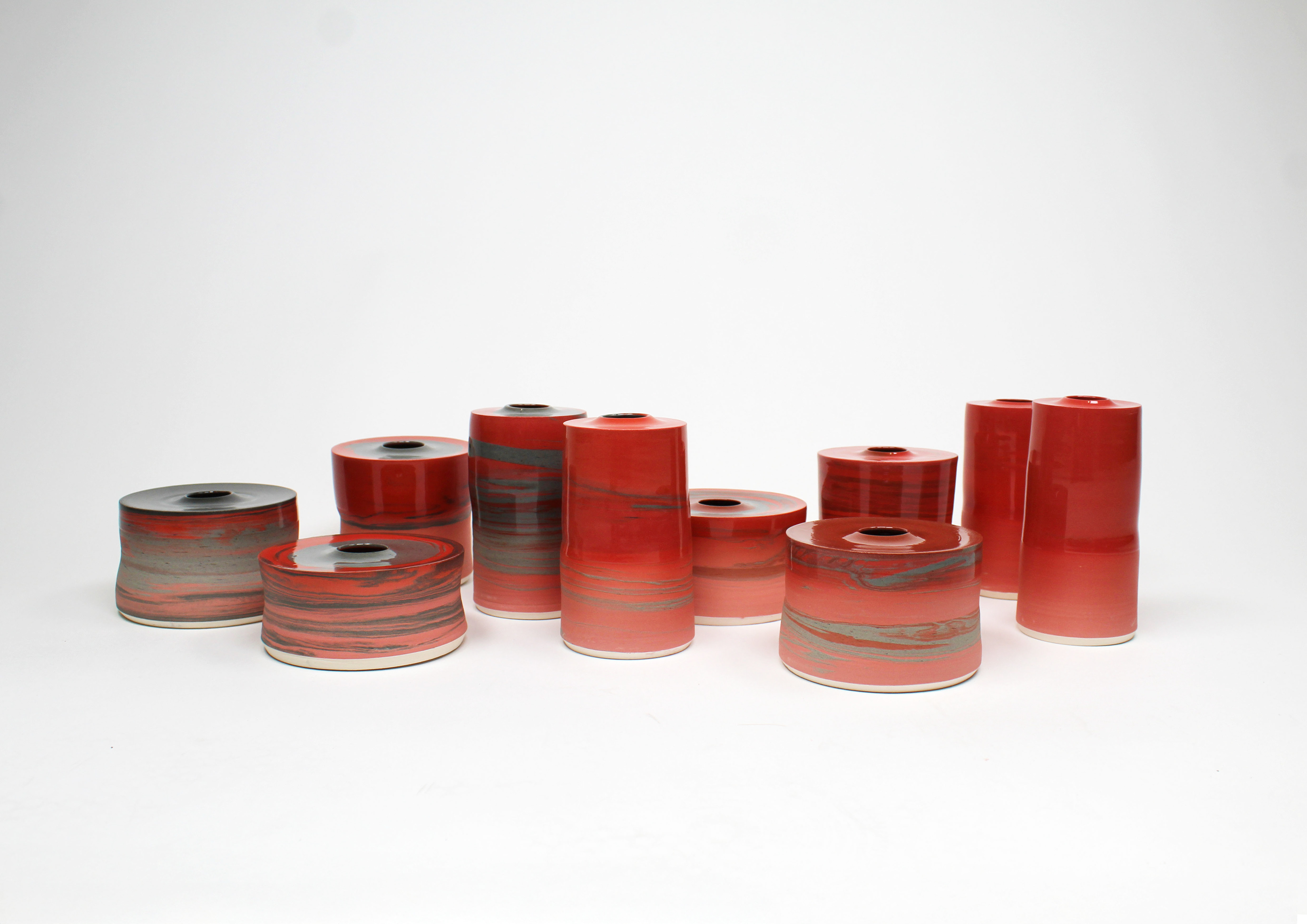
Opportunities After University
After university, I’m excited to explore opportunities that allow me to continue developing my practice while engaging with others through creativity. One of my main goals is to either open my own pottery studio or join a community-focused ceramics space. Although I wasn’t able to incorporate community engagement into this project, it’s still something I’m deeply passionate about, especially the idea of using ceramics as a tool for connection, education, and awareness. I’m also looking forward to applying to galleries and exhibitions to showcase my work, starting with events like New Designers, where I hope to build valuable contacts and expand my creative network. Exhibiting my work publicly is something I’m really excited about, as it gives me the chance to share my ideas and receive feedback from a wider audience. Additionally, I plan to apply for artist residencies, which would give me time, space, and mentorship to push my practice further while connecting with other makers
https://www.clayshed.co.uk/residencies
https://www.mudworksbristol.com/open-studio-sessions

